On my way to Banja Koviljača where I was heading in order to have a week of spa treatments I also drove through a settlement called Bugarine (Бугарине) not far from the town Šabac. This is one of a few villages in this part of Serbia where inhabitants almost compete in who is going to have a bigger and more expensive house.
In the past, this was quite typical of east Serbia, but obviously over time the trend extended westwards. Namely, a lot of people from these areas have gone abroad to live and work there, but in the context of these villages and houses I’m talking about, Vienna (Austria) is somehow mentioned most often. These people are the gastarbeiters (guest workers in German) who would nowadays be referred to as economic migrants. Very often, as the case is here, these are the people coming from rural areas, of poor education and they do jobs that do not require high qualifications, but they are hard-working, diligent and thrifty. In the places where they live and work, they have small flats and live modestly, but all the money they earn they save in order to build big houses back in their homeland and the village they come from.
But, not just ordinary big houses. Oh, no. These are huge mansions, villas, which some people call “Carrington houses,” after Blake Carrington, the famous tycoon from the American TV series “Dynasty” that was back in the day extremely popular everywhere. Some of these houses boast as many as 30 bedrooms, they often have swimming pools, etc. And none of this would be strange, if these houses were not completely empty most of the year. The owners come here only when they take annual leave somewhere there, in Vienna or wherever.
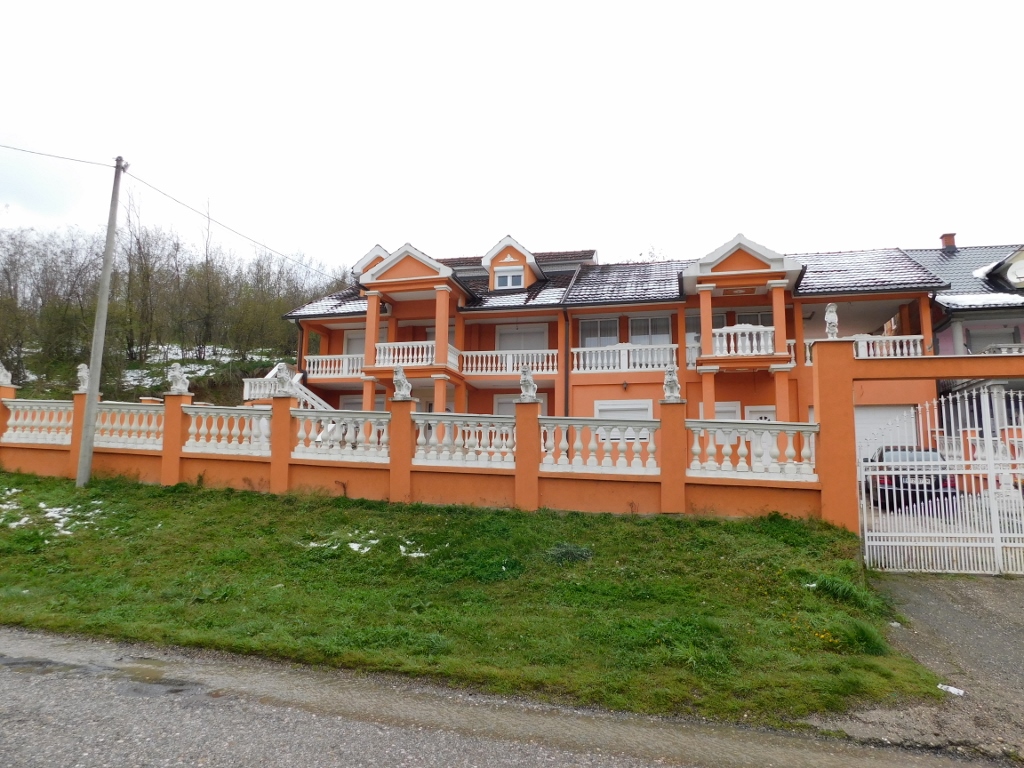 Village Bugarine, a detail
Village Bugarine, a detail
According to what I’ve read, some of the owners build a couple of houses on the same plot of land, for instance, for each of the offspring. What is often sad is that their children actually grow up somewhere there, let’s say in Vienna, and their life is right there and not here, plus they are not as sentimentally attached to the village their parents come from. It remains open whether the descendents will be truly interested in enjoying these large mansions which the parents built for them in the first place.
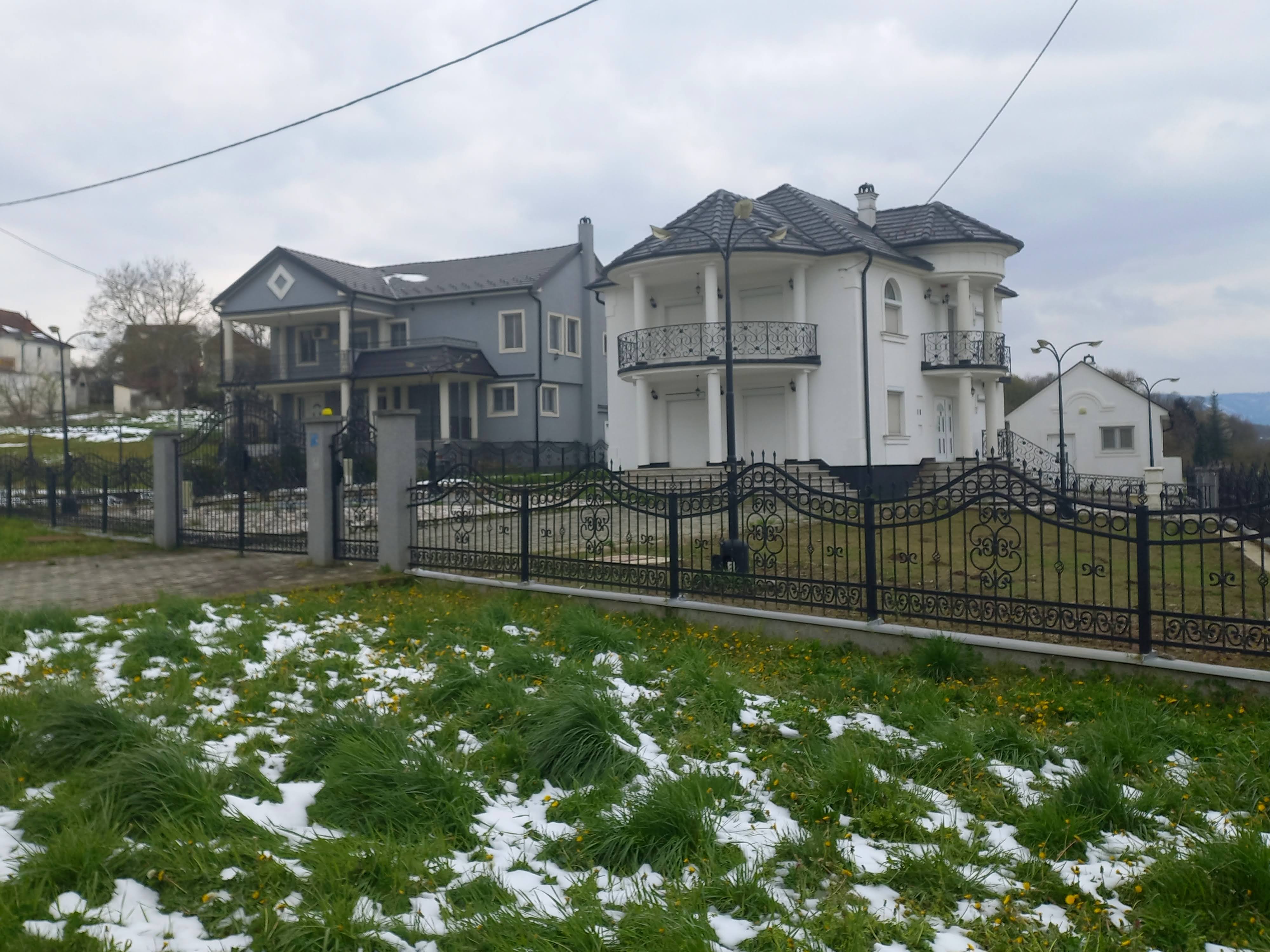 Village Bugarine, a detail
Village Bugarine, a detail
On the other hand, one can realistically ask a question whether these people truly build the houses for their descendents or they do it because in this way they try to work out some of the personal problems linked to the childhood spent in poverty. There is also a “local speciality” which is that people pay a lot of attention to what the neighbours think or they presume they think and whether the neighbours are envious, thus making sure that each subsequent house is even more luxurious.
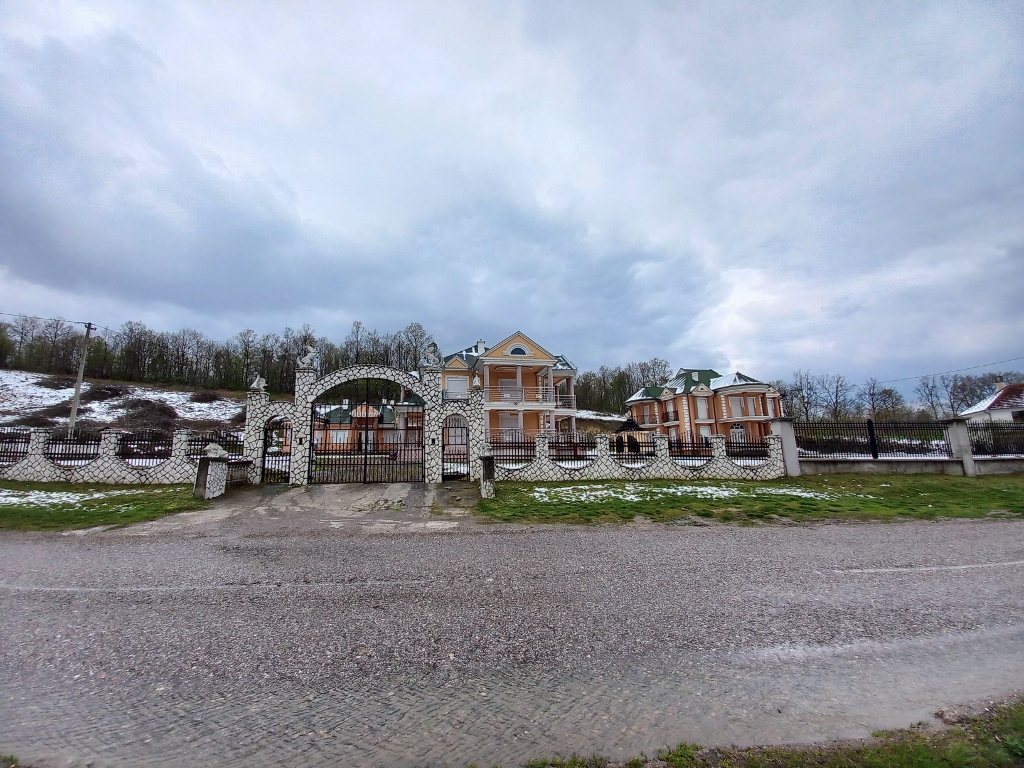 Village Bugarine, a detail
Village Bugarine, a detail
Very often the people who look at this from the sidelines, especially those who see themselves as intellectually and educationally superior, like to comment on this type of behaviour and on the “waste of money” with a condescending smirk. I must admit that I also used to be prone to such an approach when looking at the whole situation, but over time I have learned to dial down my criticism a little. After all, this is the money of these people and if they want to spend it on building a house in which they will (maybe) live 2-3 weeks a year, this is their problem. Who am I to judge any of it? I also spend my money in the way I like and I don’t consult anybody about the matter. I just sincerely hope, and would like to believe, that the owners of these houses are truly happy every single time they see or think of their possession.
And yet, I also must admit that while I was walking beside some of these houses taking photos of different details, a devil inside of me put a smile on my face when I noticed one specific detail that can be discerned in the following photo. I don’t mean the horse or the swan on the fence that would be considered by the “posh people” the epitome of kitsch. The main detail that led me to something between an arrogant smile and a truly joyful giggle was the mark on the balcony’s fence. According to what I’ve heard, Dolce & Gabbana are very popular among the owners of these houses.
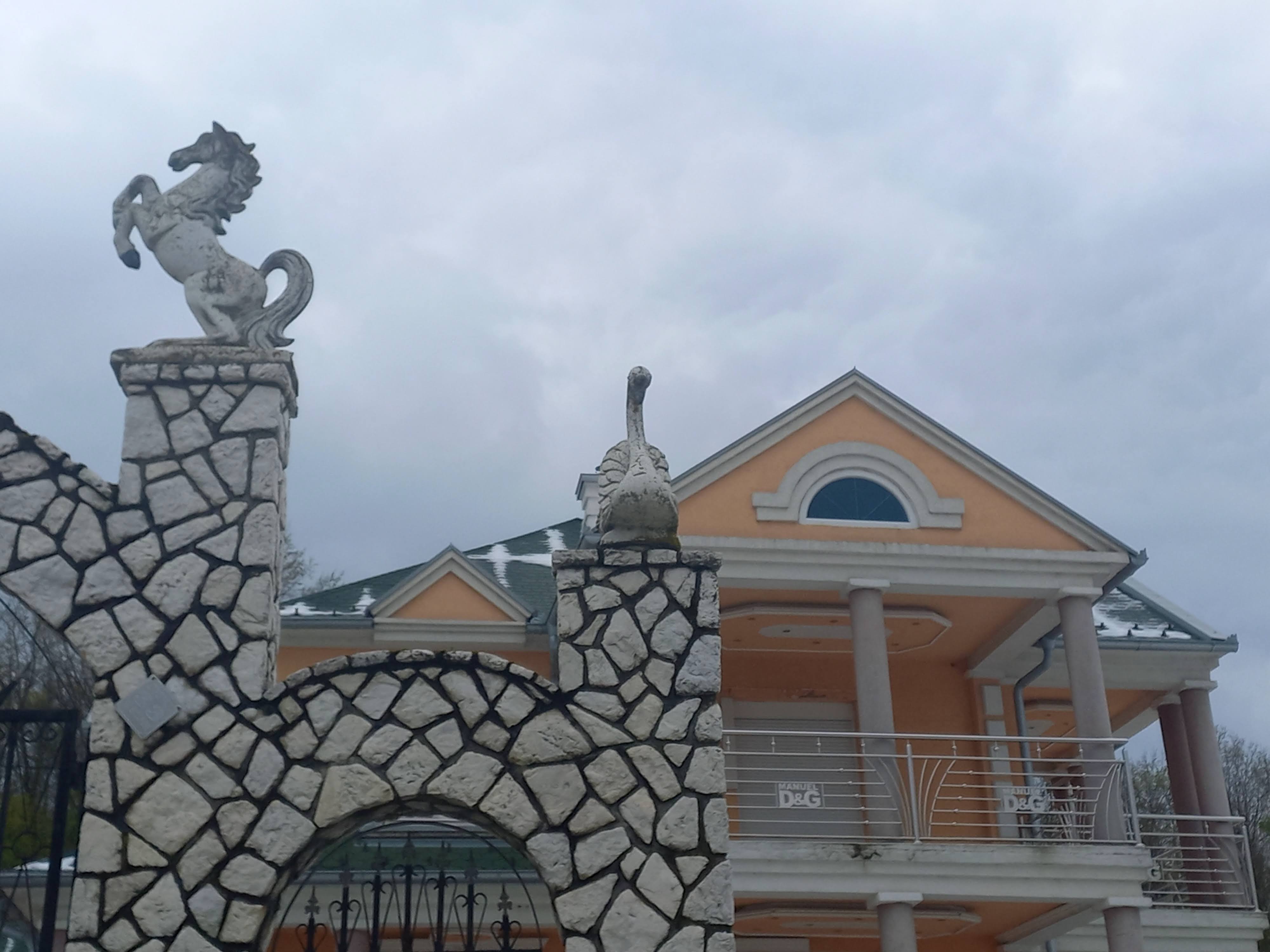 Village Bugarine, a detail
Village Bugarine, a detail
But, even in this case, one should not be too judgmental, although these people are often referred to as “bumpkins” or “hillbillies.” After all, these are typical details that infrequently appear among the nouveau riche people. Not only in the region of Mačva and not only in Serbia. Precisely that famous American TV series multimillionaire (today he would be a multibillionaire), Blake Carrington, “had” Venus de Milo in his entrance hall. Nobody who is really well educated and cultured would keep a copy of anything at their home – either the original or nothing, but since this particular original is at the Louvre and is absolutely unavailable for any amount of money, while the host had to make an impression on the guests, then a copy had to do. And since he was truly filthy rich (in the TV series) and did not have just one big mansion, while living in a tiny flat in Denver, nobody said for Blake Carrington that he was a hillbilly. This speaks more of those who comment than of those who are the object of the comment.
I continued with my drive further in the direction of Krupanj, but already after less than 4 km I turned towards the village of Krivaja (Криваја) and a monastery of the same name. There were few vehicles on the road and thus I could easily stop from time to time in order to take photos of the landscapes I was driving through which were to a large degree covered by the unexpected and comparatively unusual snow in April.
 Landscapes close to village Krivaja
Landscapes close to village Krivaja
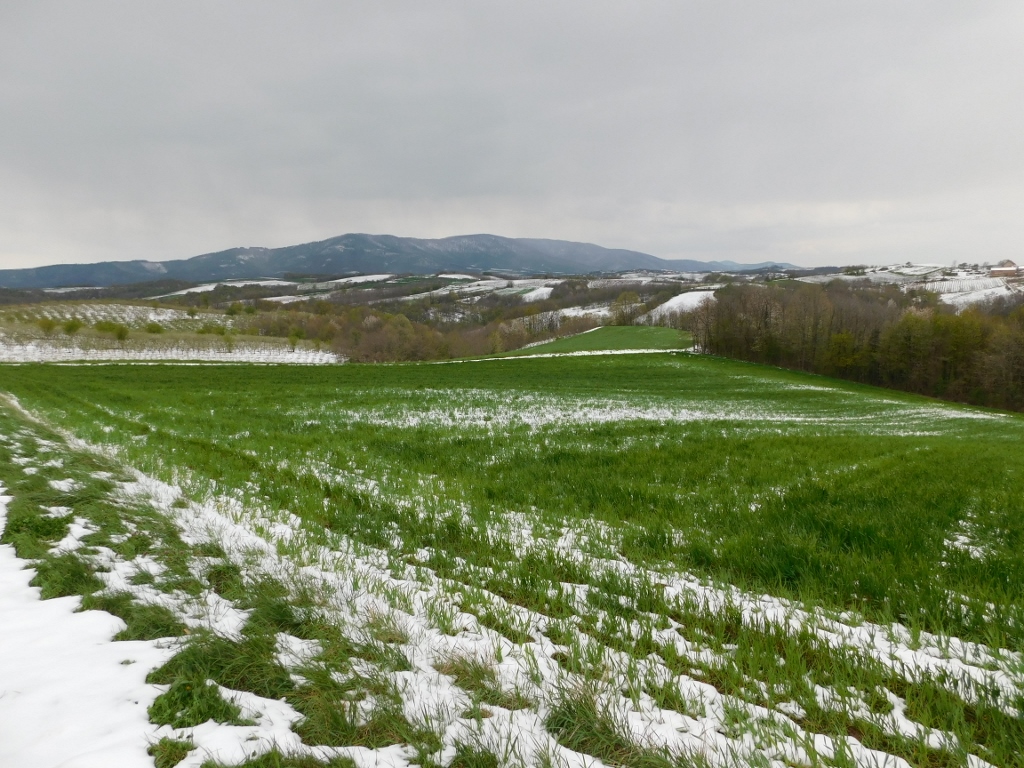 Landscapes close to village Krivaja, view at mountain Cer
Landscapes close to village Krivaja, view at mountain Cer
As for the monastery, nowadays there is only a church here and this is the Church of Transfiguration categorised as an immovable cultural property of great importance. The church cannot be seen well from the road because of the trees, but once you approach it its beauty can be fully appreciated, irrespective of the scaffolding present here at the time of my visit. It was obvious that there were ongoing works on its exterior.
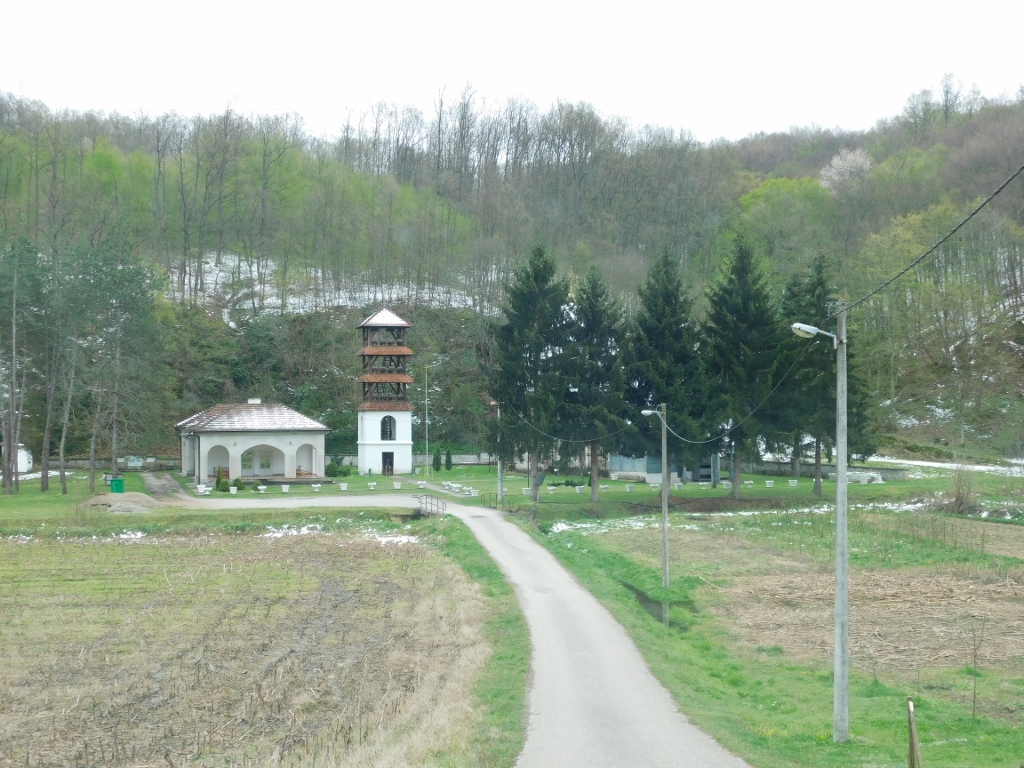 Church of Transfiguration in Krivaja
Church of Transfiguration in Krivaja
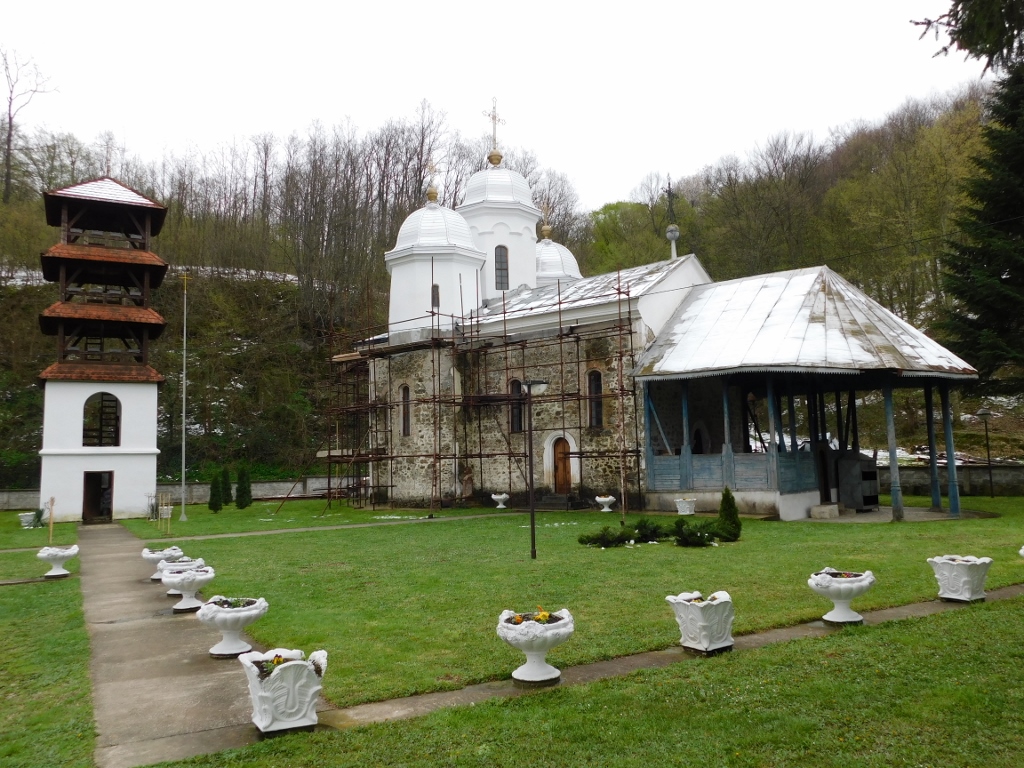 Church of Transfiguration in Krivaja
Church of Transfiguration in Krivaja
The church was built in the 15th century as a monastery church and it got its present-day form during the reconstruction of 1790. On the outside, it has striking three domes, as well as an impressive wooden porch added adjacent to the front facade.
Unfortunately, the church was closed and I could not see anybody around, so I could only look at it from the outside.
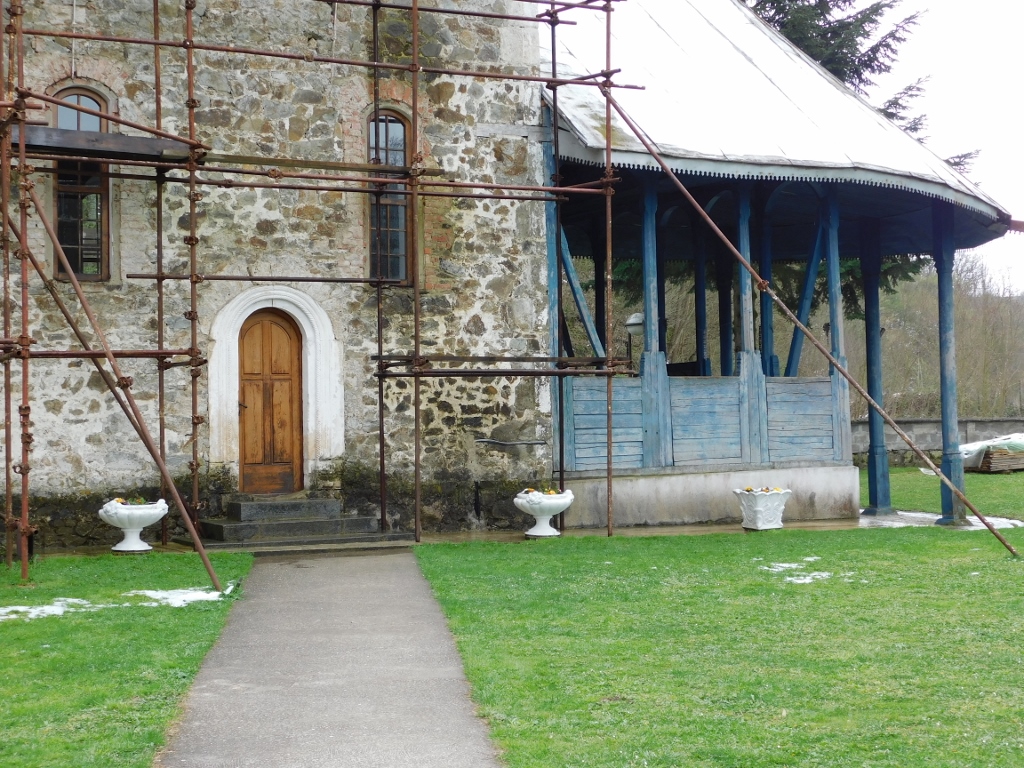 Church of Transfiguration in Krivaja
Church of Transfiguration in Krivaja
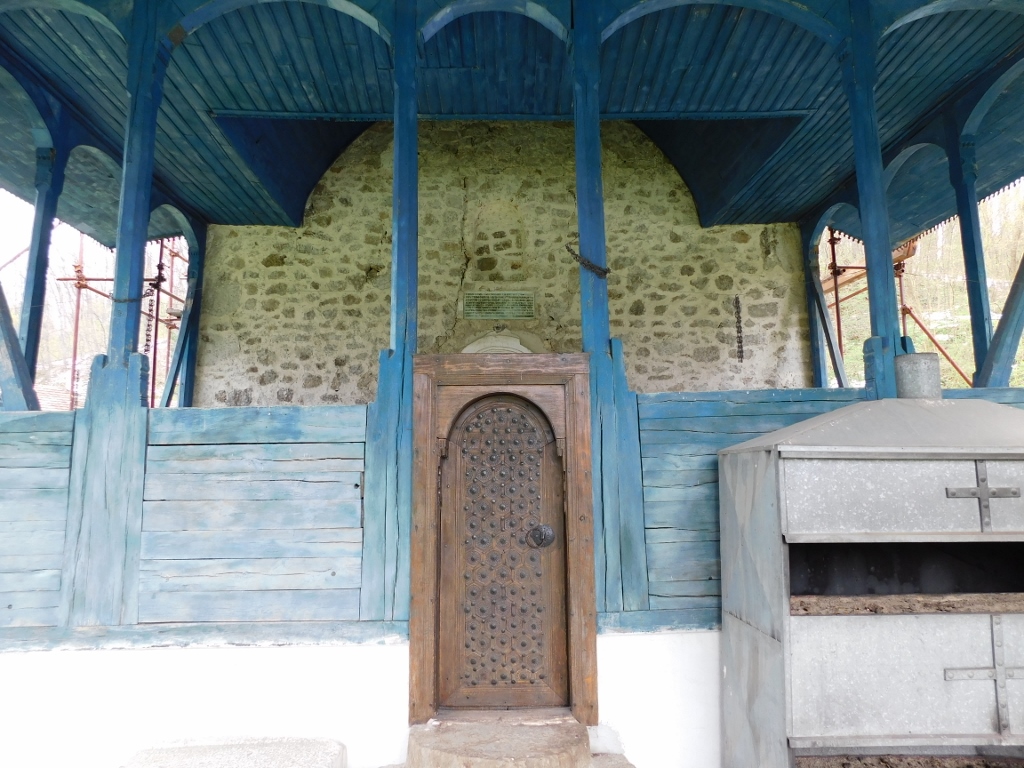 Church of Transfiguration in Krivaja
Church of Transfiguration in Krivaja
Then I returned to the main road leading to Krupanj again and some 9 km farther I reached village Tekeriš (Текериш) and a landmark of exceptional importance. This is the Memorial Ossuary on Mount Cer built in 1928.
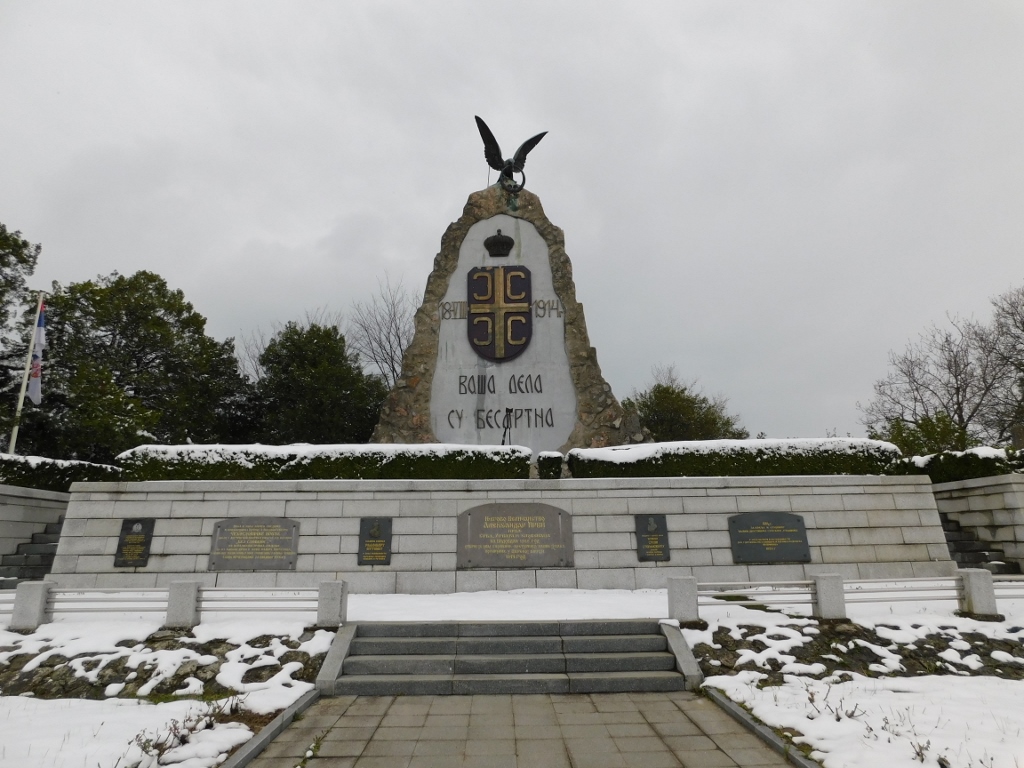 Memorial Ossuary on Mount Cer
Memorial Ossuary on Mount Cer
Tekeriš is situated at the foot of mount Cer or on the perimeter slopes of this mountain, depending how you look at it, and this memorial complex was built here in the memory of the famous Battle of Cer fought in 1914 and the soldiers who perished here.
Namely, in the second half of August 1914, just some three weeks after Austria-Hungary declared war on Serbia and started with the shelling of Belgrade on 28th July, the Battle of Cer started and this is where Austria-Hungary and Serbia clashed on the Serbian territory.
Although, generally speaking, Austria-Hungary was militarily significantly stronger, especially bearing in mind that Serbia participated in the exhausting Balkan Wars (1912-1913) during the previous two years, the Serbian army won its first victory in WWI on mount Cer. This battle outcome is often referred to as the first “Allied victory” over the Central Powers, since Russia joined the war on the side of Serbia from the very beginning and Great Britain from 4 August, although this was a purely Austro-Hungarian and Serbian conflict.
On the Serbian side, the role of General Stepa Stepanović was particularly outstanding and after the battle he was promoted to the rank of vojvoda or field marshal, which is the highest tank in the military forces. As a matter of coincidence, within my travel around Serbia I have already visited the birth-house of Stepa Stepanović in Kumodraž (Belgrade) (https://www.svudapodji.com/en/belgrade-21/), as well as his tomb in Čačak (https://www.svudapodji.com/en/cacak-ovcarbanja-1/).
Certainly the youngest participant in the Battle of Cer was Momčilo Gavrić (1906-1993), who was 8 years old at the time!!! Namely, at the beginning of August 1914, in village Trbušnica, on the nearby mountain Gučevo that I will talk about more later on, where Momčilo Gavrić was born, Austro-Hungarian soldiers killed his father, mother, three sisters, four brothers and grandmother (!!!), while little Momčilo survived by pure chance since his father had previously sent him to his uncle’s in order to fetch something. Since he was left completely alone, he managed to find Serbian army and they did not know what else to do, but to take care of him once he told them what had happened. Moreover, there was an order issued that the solders of the regiment that informally “adopted” young Gavrić should allow the little boy to fire from a cannon three times a day in order to avenge his family. And there are children today who complain that their life is difficult and that they have childhood traumas!
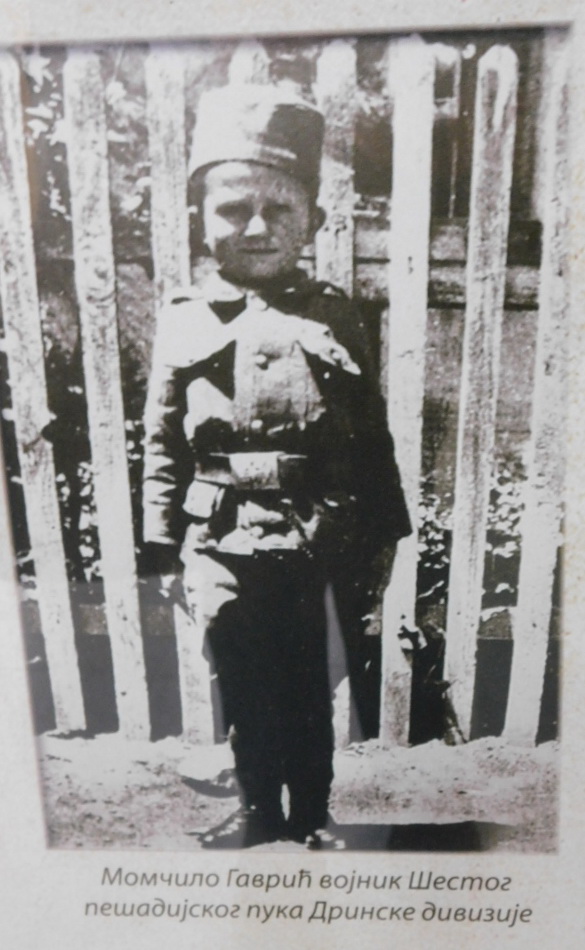 Momčilo Gavrić in the uniform of the Serbian army
Momčilo Gavrić in the uniform of the Serbian army
Since I’m mentioning participants in the Battle of Cer, there is an interesting piece of data which some Serbs later used in order to explain their position that Tito “hated Serbs.” I don’t know if he really hated Serbs or not, but the fact is that in 1914 as a soldier of the Austro-Hungarian army, Josip Broz Tito, later the President of the SFR Yugoslavia, took part in several battles against the Serbian army, including also the Battle of Cer.
His participation in the military campaigns of Austria-Hungary is not unusual since Croatia in which Tito was born used to be a part of Austria-Hungary, so all these different nations that were a part of this empire had their representatives among the solders, but the actions and choices of the soldiers of different nationalities were also sometimes quite different.
On the wall of the Memorial Ossuary on Mount Cer there is also a plaque that says the following:
“May this rock bear witness to and tell the story to the future generations about the high degree of moral conscience of the Czechoslovakian brethren who were in 1914 while singing “Hey, Slavs...”* without firing a single rifle killed in the Austrian attack so that their blood and the blood of our knights with whom they were laid to rest here together can give rise to the freedom in our and their fatherland. Glory to the martyrs of the 28th Prague Regiment!”
*-“Hey, Slavs” is a song dedicated to the Slavs in general. Later it was also the official anthem of the Socialist Federal Republic of Yugoslavia and its melody is the same as that of the Polish anthem.
Namely, the soldiers of the 28th Prague Regiment refused to fight against their Slavic brothers and during the battle they sided with the Serbian army. 812 of them were killed here and their mortal remains were buried in the ossuary together with the remains of 2230 Serbian soldiers. By the way, the final balance concerning the number of the killed, wounded and captured Austro-Hungarian soldiers was more the twice the number of the Serbian military victims (over 40,000 vs. up to 20,000).
Above the ossuary there is a monument in the shape of a natural rock that is around 10 m high.
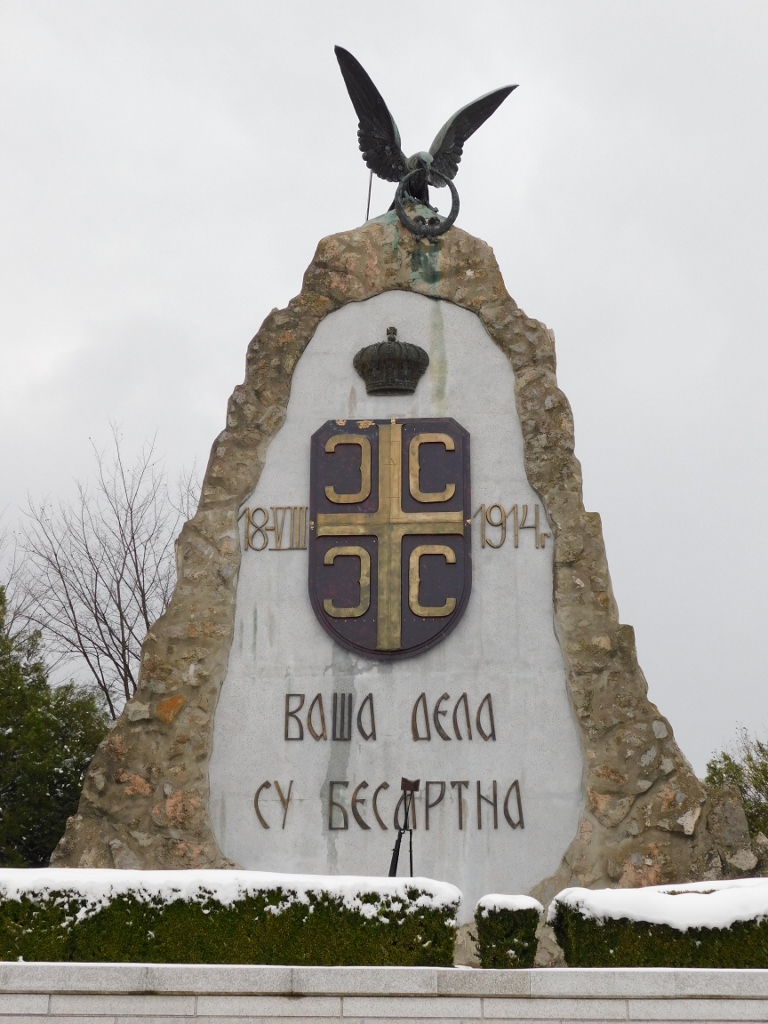 Monument above the Memorial Ossuary on Mount Cer
Monument above the Memorial Ossuary on Mount Cer
On the top there is an eagle with spread wings holding a laurel wreath in its beak, while below there is a flat surface with the Serbian coat of arms, the decisive date of the Battle of Cer (18 VIII 1914), as well as the inscription “Your deeds are immortal.” In front of the monument there are three rifles with bayonets, resting one against the other, while on the top of the bayonets there is a šajkača, traditional Serbian cap that was also an integral part of the Serbian soldiers’ uniform.
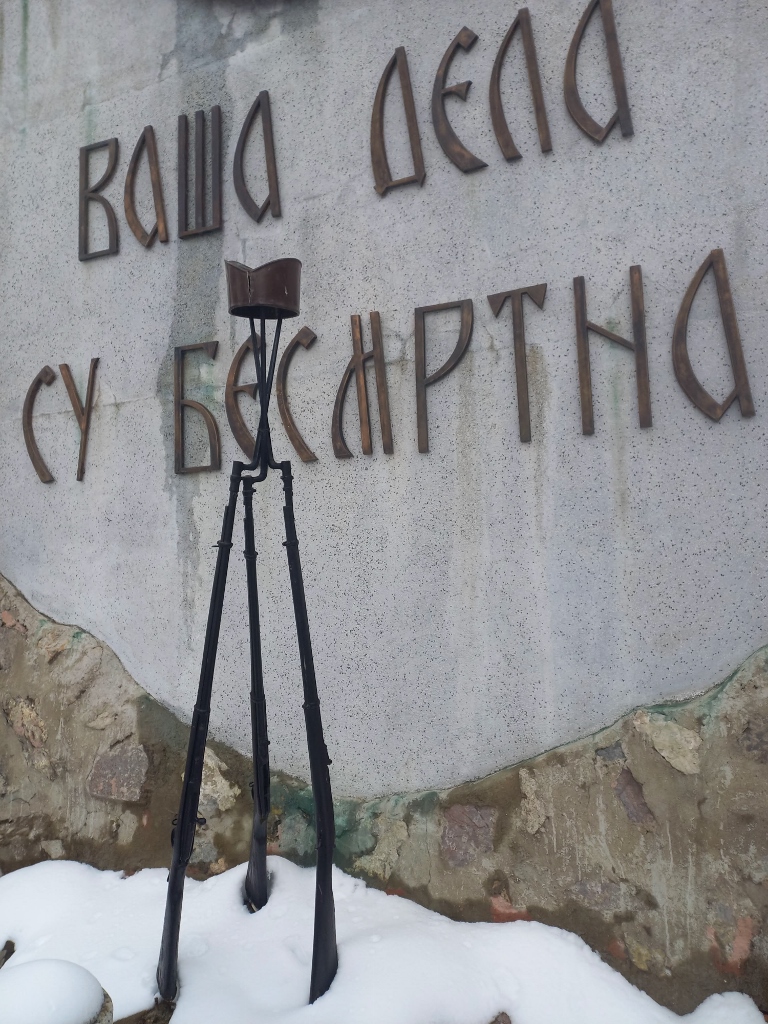 Monument above the Memorial Ossuary on Mount Cer, a detail
Monument above the Memorial Ossuary on Mount Cer, a detail
Within the complex there is also a small museum, as well as monuments/busts of the famous Serbian military commanders from WWI, and of King Petar I and King Aleksandar I Karađorđević.
Before continuing with my trip, I took a photo of the landscape that spreads behind the memorial complex. If it hadn’t been for the sprouting wheat, it would have been quite easy to presume it was January or February (as a reminder, it was April).
 Landscapes around Tekeriš in April 2023
Landscapes around Tekeriš in April 2023
Still, I did not go very far. Actually, I just drove down to the Church of the Holy Prophet Elijah in Tekeriš. The church is not considered a moment of culture, but I had read a little bit about it, so I thought “Why not?”
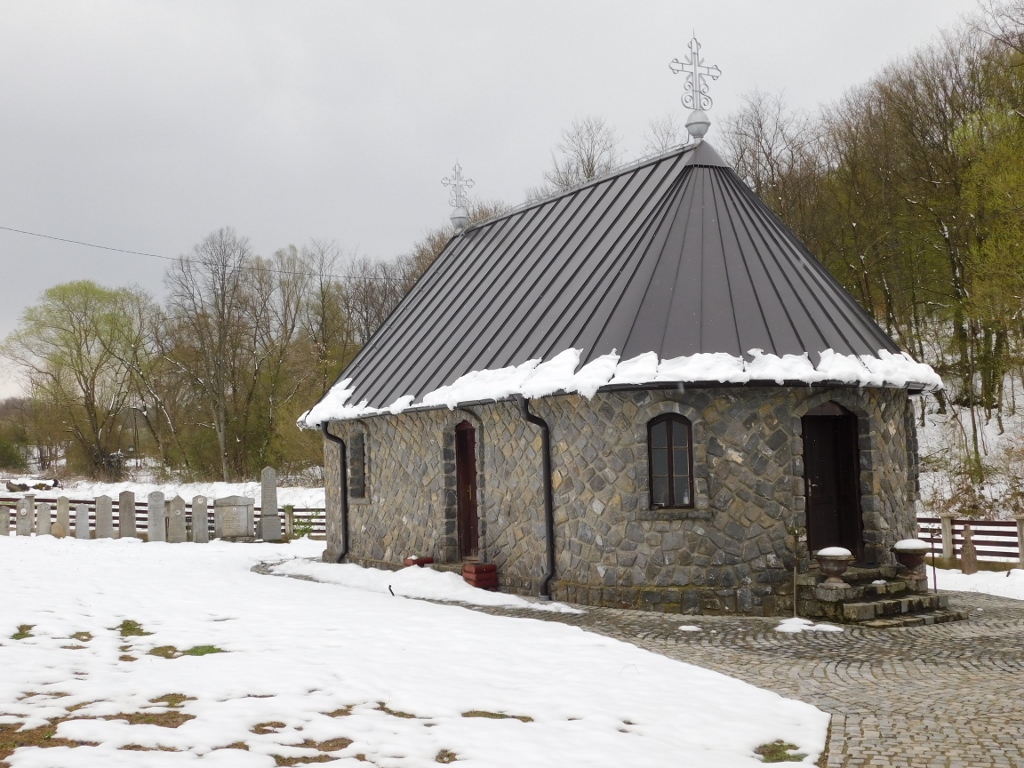 Church of the Holy Prophet Elijah in Tekeriš
Church of the Holy Prophet Elijah in Tekeriš
The church was originally built back in 1839 as a wooden church, but at the beginning of the 20th century the wooden boards were removed and using the same structure the church was rebuilt using bricks. The dressed stone facade that can be seen today was made in 1989. This is a small single-nave building and luckily it was open, so I could get inside.
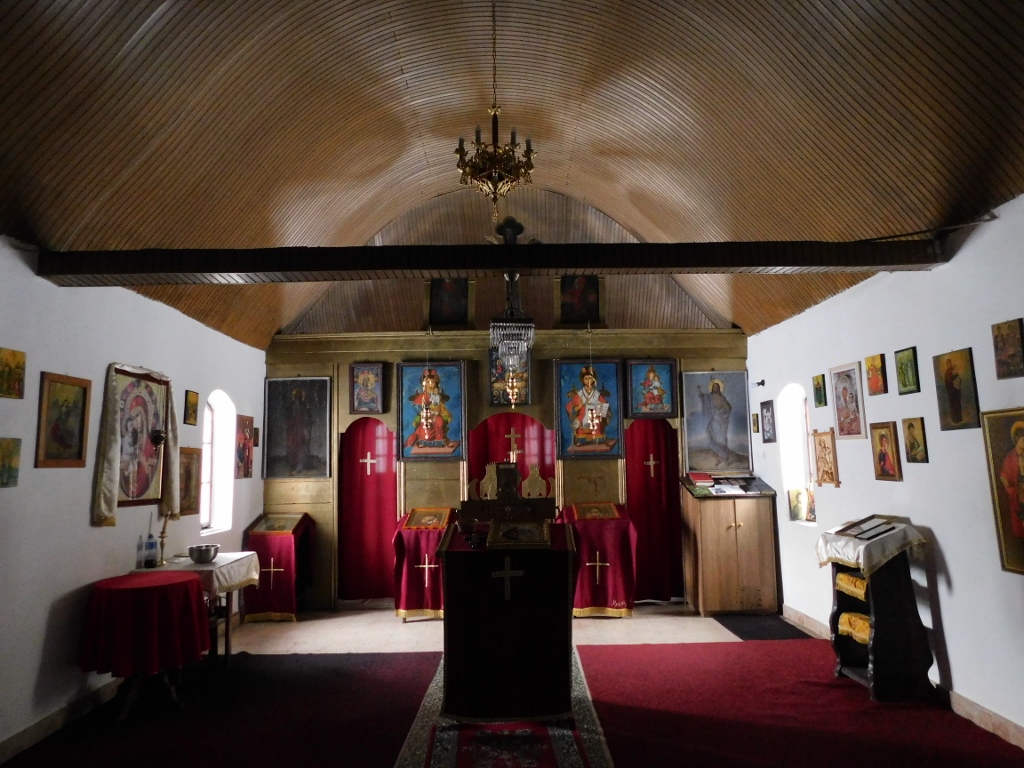 Church of the Holy Prophet Elijah in Tekeriš
Church of the Holy Prophet Elijah in Tekeriš
The iconostasis is from the time when the church was originally built, but on approaching it I was quite surprised when I saw the despotic icons, since admittedly I found the appearance of the figures rather curious. I simply do not understand the additions on the heads of the saints – as if these are some kind of ears (at least that was my first association), so I immediately remembered the fairy-tale “Emperor Trojan has goat ears.”
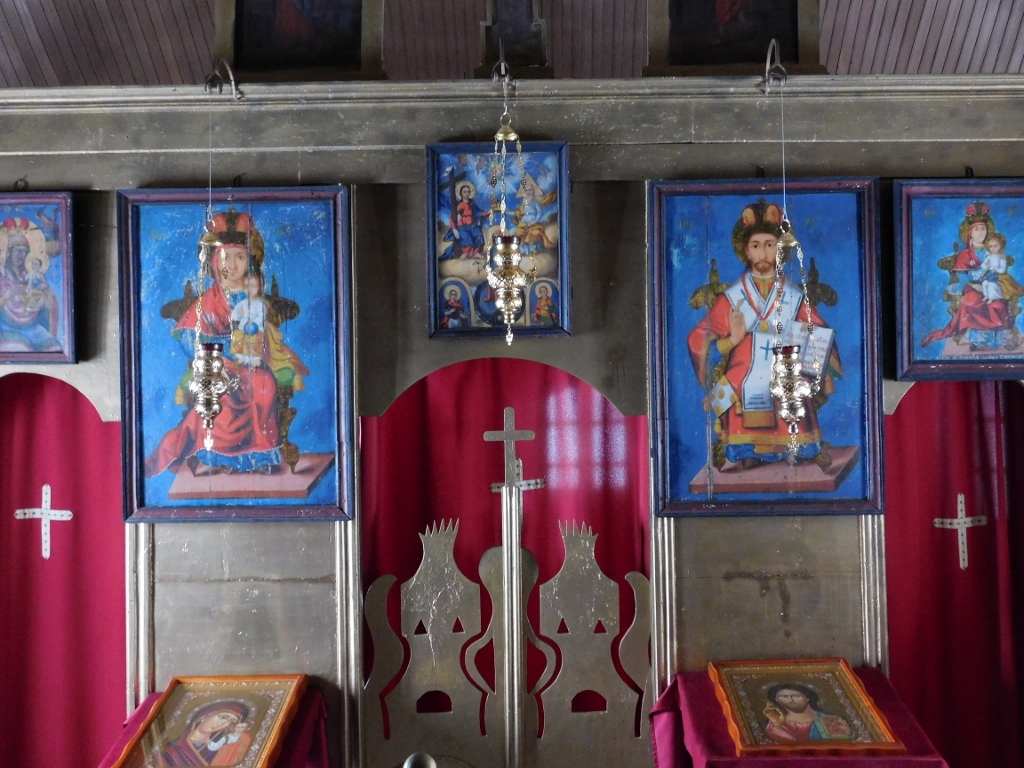 Iconostasis at the Church of the Holy Prophet Elijah in Tekeriš
Iconostasis at the Church of the Holy Prophet Elijah in Tekeriš
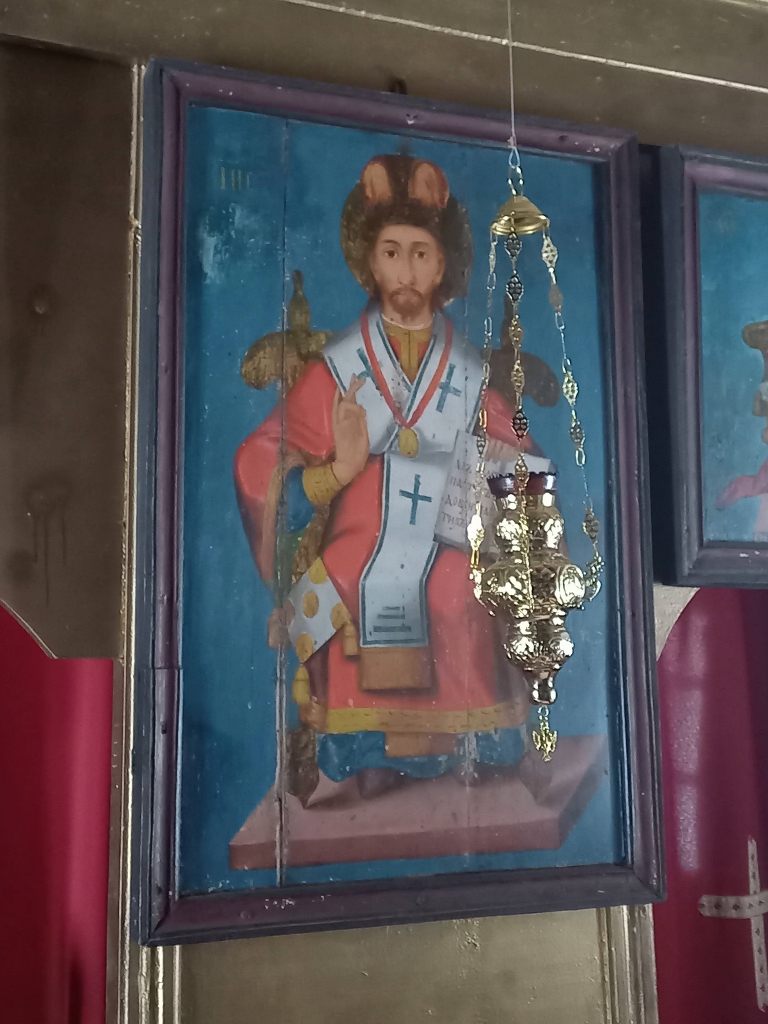 Iconostasis at the Church of the Holy Prophet Elijah in Tekeriš, a detail
Iconostasis at the Church of the Holy Prophet Elijah in Tekeriš, a detail
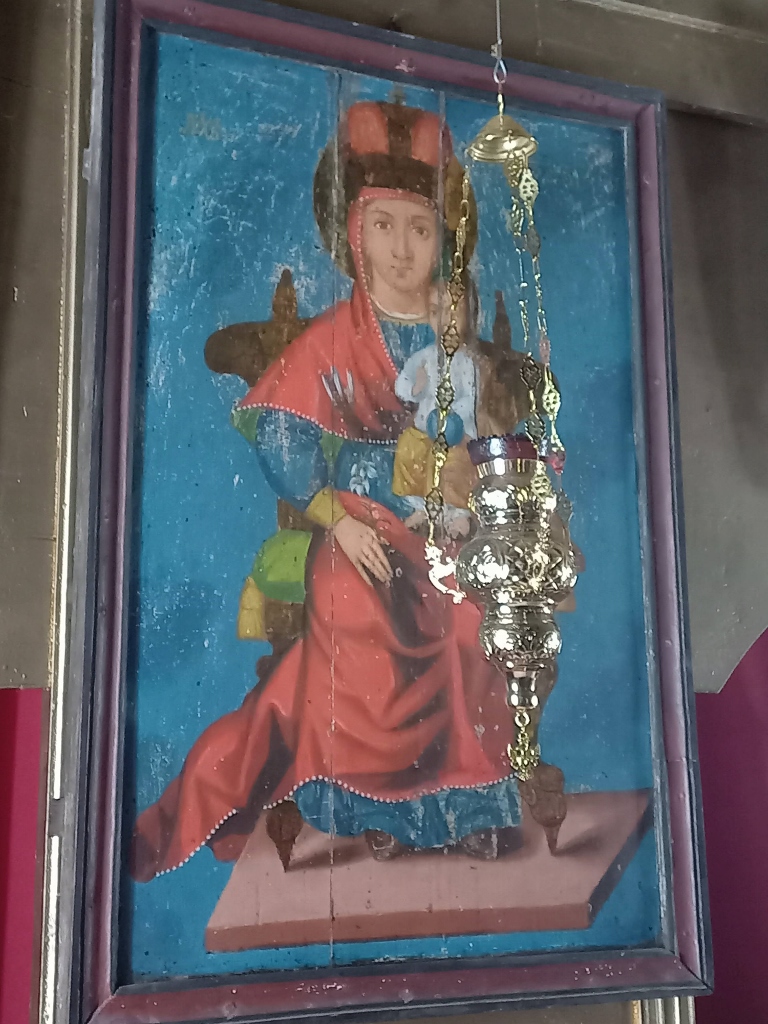 Iconostasis at the Church of the Holy Prophet Elijah in Tekeriš, a detail
Iconostasis at the Church of the Holy Prophet Elijah in Tekeriš, a detail
After the visit to the church, I returned to the main road and then I drove back for a few kilometres since there was a turn to the road leading over Mountain Cer (Цер). When I planned this trip, I thought that already on this first day I could visit a few other places on the west side of Cer, but this was apparently not to be.
However, I still did not know this, so valiantly I headed along the nicely cleared road where other than me there was practically nobody else.
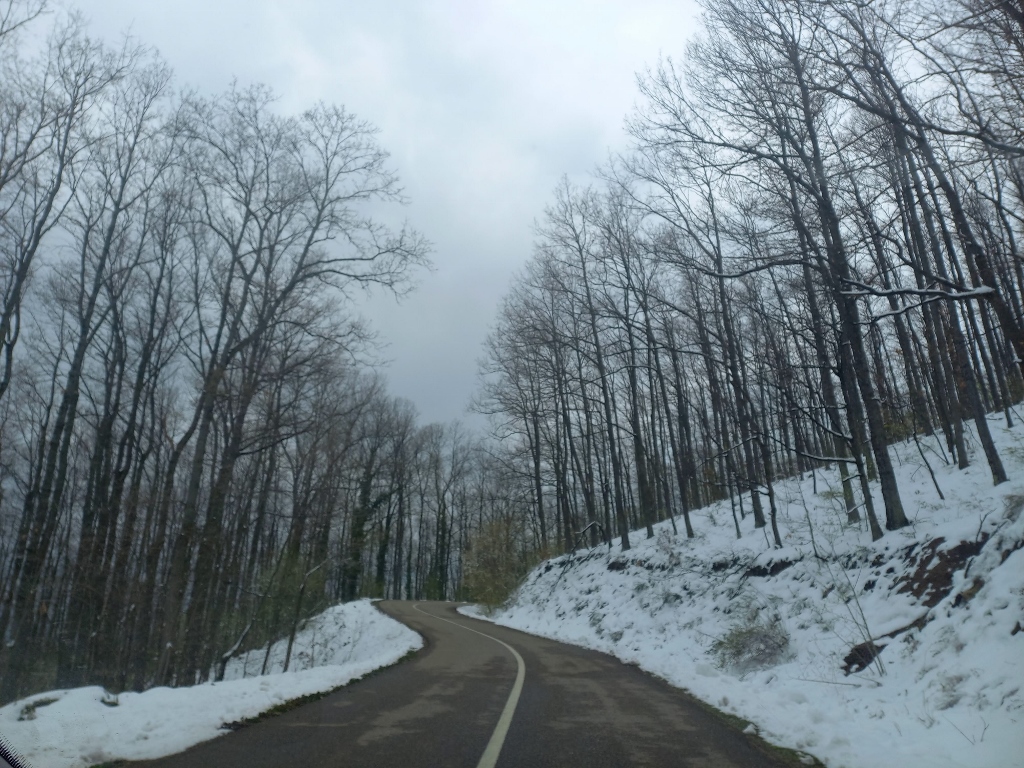 Road over mount Cer in the first half of April 2023
Road over mount Cer in the first half of April 2023
There are two sites on mount Cer that are potentially interesting. One of them is the early Byzantine fortress Konjuša and the other one is Trojanov grad (Trojan’s town), which are actually remains of a fortress, primarily of a defence wall.
As for the fortress of Konjuša, this is a monument of culture of great importance in the shape of an archaeological site from the 5th-6th century CE, that is, from the period of early Byzantium. The site is situated on the north slopes of mount Cer, but somewhere in the forest and I had no concrete data as to where exactly, so I knew beforehand that I would not even try to locate it.
A similar situation concerns Trojanov grad. At that site, also on the north (northeast) slopes of Cer, there used to be a settlement already in prehistory (early Iron Age) and nowadays there are still remains of a defence wall. This is also located in the forest and from the road I could see signs earmarked primarily for the hikers waking in nature here. I did not plan on getting into the forest myself, so I did not even search for any suitable place where I could leave my car, opting rather to continue with the drive.
I find it interesting, however, that this site is called “Trojanov grad” (again, Trojan’s town) and that according to a legend its construction is attributed to the Slavic mythical Emperor Trojan. There is this famous fairy-tale, “Emperor Trojan has goat ears,” which reminded me again of those icons from the church in Tekeriš. Who knows what the author wanted to depict with that. By the way, Slavic Emperor Trojan is often compared to the Roman Emperor Trajan (53-117 CE), which inspires some authors to claim that the Slavs actually inhabited the Balkan Peninsula much earlier than what is claimed by the official history (late 6th century).
Driving on along the road over mount Cer, I passed by the Church of St. John of Shanghai the construction of which close to the summit of Cer (687 m) was completed in 2014, but on this particular day everything seemed deserted and I could see no people around, so I did not even think of making a break here and trying to visit the church.
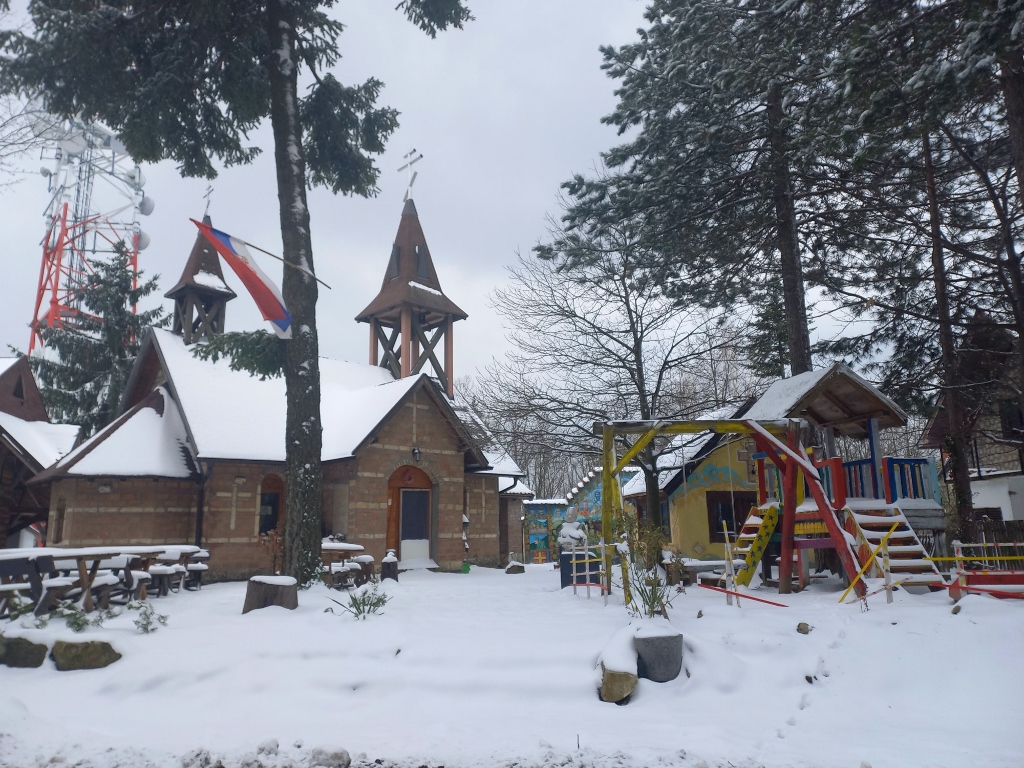 Church of St. John of Shanghai on mount Cer
Church of St. John of Shanghai on mount Cer
Instead, not far from this spot I got to the end of the cleared road and there was only road covered in snow in front of me. Completely puzzled I stopped.
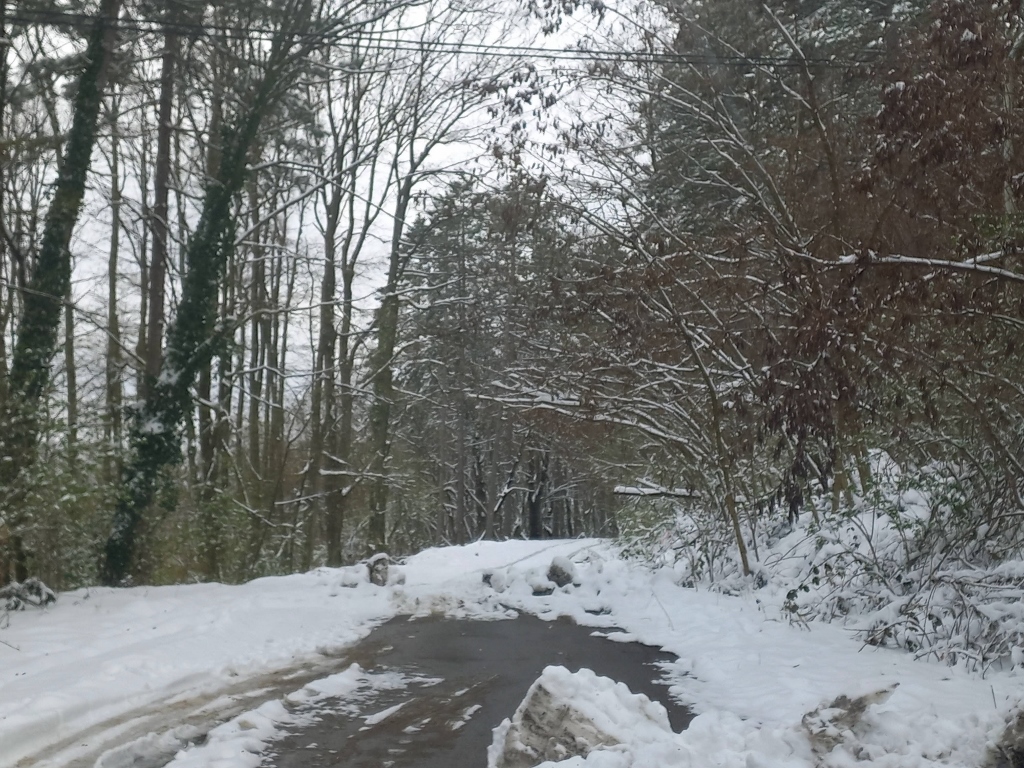 Uncleared part of the road over mount Cer in the first half of April 2023
Uncleared part of the road over mount Cer in the first half of April 2023
I could see the tracks of a vehicle that bravely continued further, but I was not eager to try anything like that. What I suppose happened here is that this is the border between two municipalities and one of them has already taken off the accessories for winter activities of their utility trucks thinking that the winter was way over. The other municipality has not done that and thus this peculiarity happened.
As I was not ready to experiment and drive in snow, I left the visit to the interesting sites on the west side of Cer for my return trip and now I simply turned around, drove back to Tekeriš and then continued to the town of Loznica (Лозница). Along the way I drove through some landscapes that I found quite attractive and within which there was a mixture of springtime greenery of the sprouting grasses, leafless trees and snow.
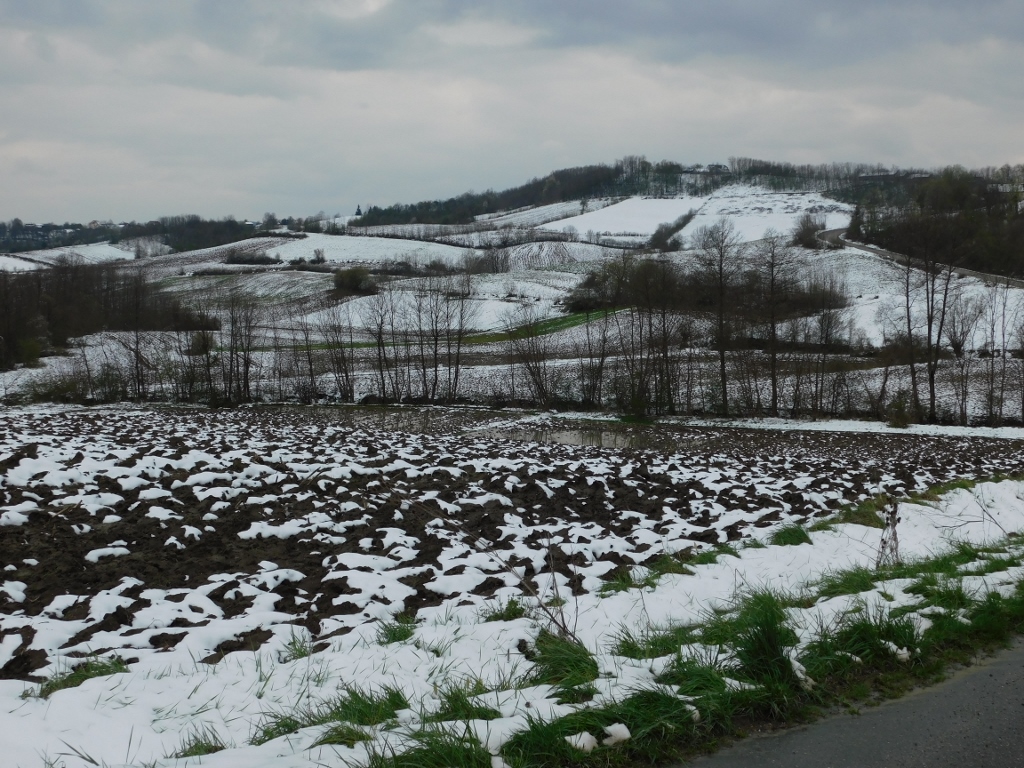 Landscape in west Serbia
Landscape in west Serbia
On occasion the navigation took me along some strange local roads, but eventually and quite successfully I reached Loznica where I had rented a small flat for a day.
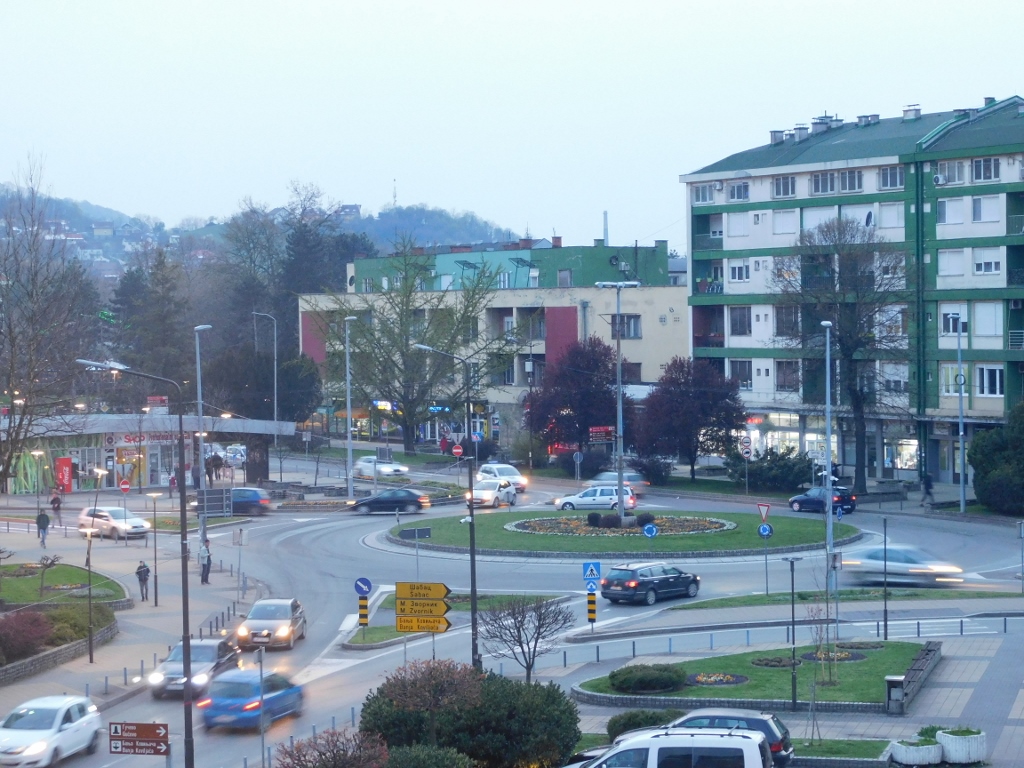 Loznica
Loznica
Since I had planned the sightseeing of Loznica for one of the following days, now I just enjoyed the warm flat that I had rented and there I wanted to have a fine rest before transferring to Banja Koviljača on the next day.